'I fixed a butterfly's broken wing to remember my mother'
- Published
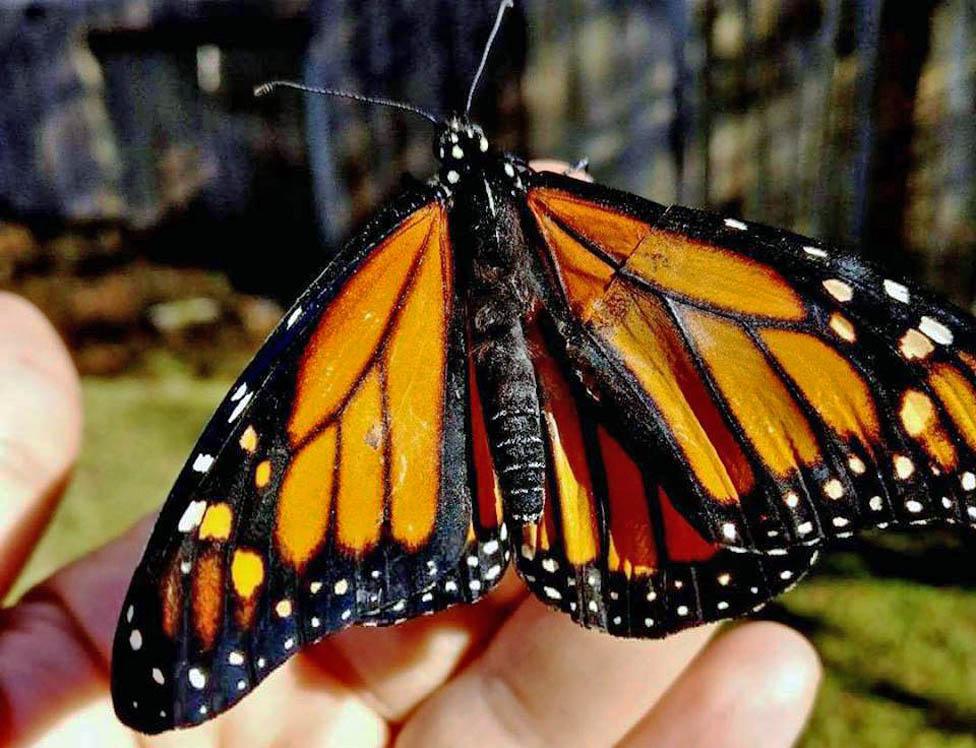
Romy McCloskey's late mother said butterflies were a sign she would always be with her. Decades later, those words inspired McCloskey to perform a remarkable act.
McCloskey advances on the butterfly, its body immobilised on the table with a loop of wire. One of its wings is stretched out - black inky veins running through a delicate orange membrane. The other is tattered and resembles Swiss cheese. McCloskey raises sharp embroidery scissors.
"Right buddy," she says. "Let's see if we can save you."
McCloskey has been saving butterflies since she discovered some Monarch caterpillars in her back garden on a warm day last September.
She raises them in an enclosure in her living room because they have a lower chance of making it through their metamorphosis in the wild due to pesticides and parasites.
"Monarchs are quite beautiful. They are a vivid orange and black with little dots on it, with a wonderful black fuzzy body, almost like a little fur coat. They're quite delicate but very feisty," she says.
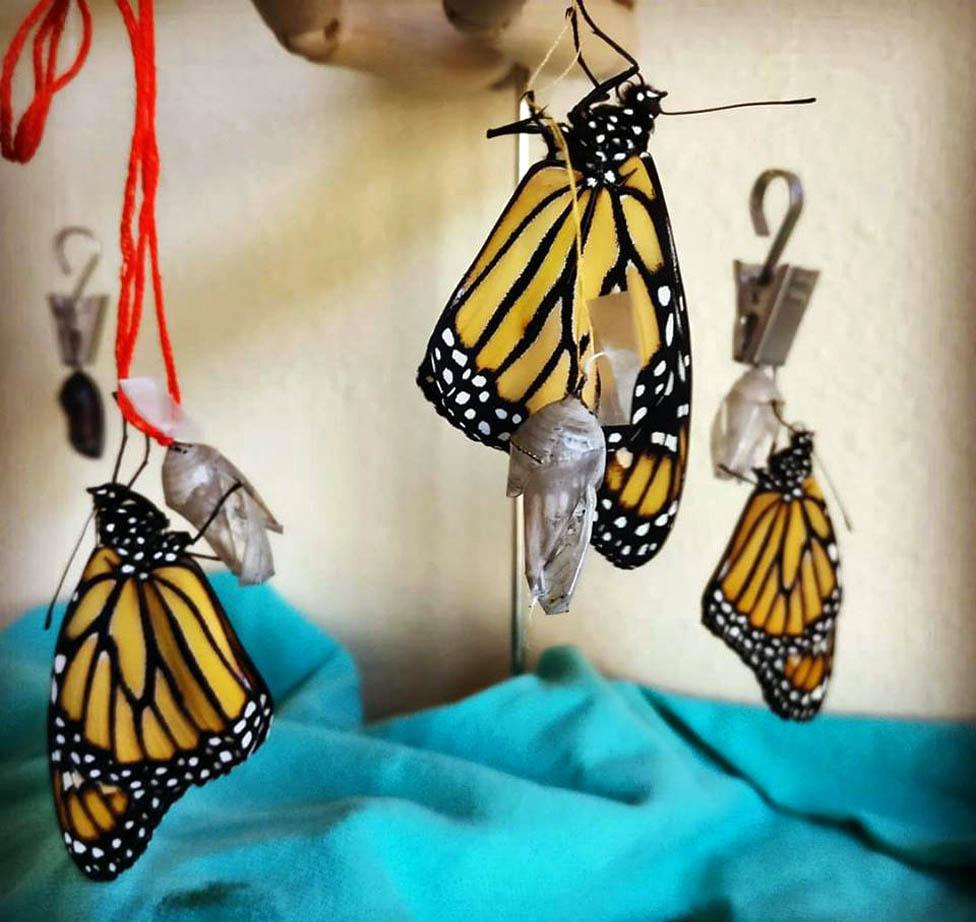
Butterflies emerge from their chrysalises
Her deep attachment dates back to her childhood spent on her parents' organic herb farm in Connecticut. She remembers playing in the barns and fields with her sister and learning about the birds, bees and butterflies and why they were needed on the land.
"Everything my mother grew had a purpose. In the fields used for hay we had wild flowers with names like black-eyed Susan, yarrow, Queen Ann's lace and milkweed," she says.
"She had wonderful gardens, full of wildlife. It was her favourite place and my favourite place to be with her."
When Romy McCloskey's mother (pictured) died from cancer, she left her daughter with a love of butterflies
A decade on, McCloskey chose to study costume design in Savannah, Georgia. But during her first year at college, McCloskey's mother Suzanne found a lump in her breast and was diagnosed with aggressive breast cancer.
"She was a very loving person and very patient. She always seemed to see life through rose-tinted glasses, even at its worst," McCloskey says.

Find out more
Romy McCloskey spoke to Outlook on the BBC World Service
You can listen to more from Outlook on BBC iPlayer Radio

It soon became clear Suzanne's case was terminal and, in her final days, mother and daughter had a heart-to-heart.
"I expressed to my mum how nervous I was about not having her around anymore.
"She said: 'Don't you worry. Any time you see a butterfly, know that I am always there and that I love you very much.'"
Suzanne died in 1998, just before her 56th birthday. McCloskey was 24 years old.
"It all happened so fast but I was grateful I was there for her," McCloskey says.
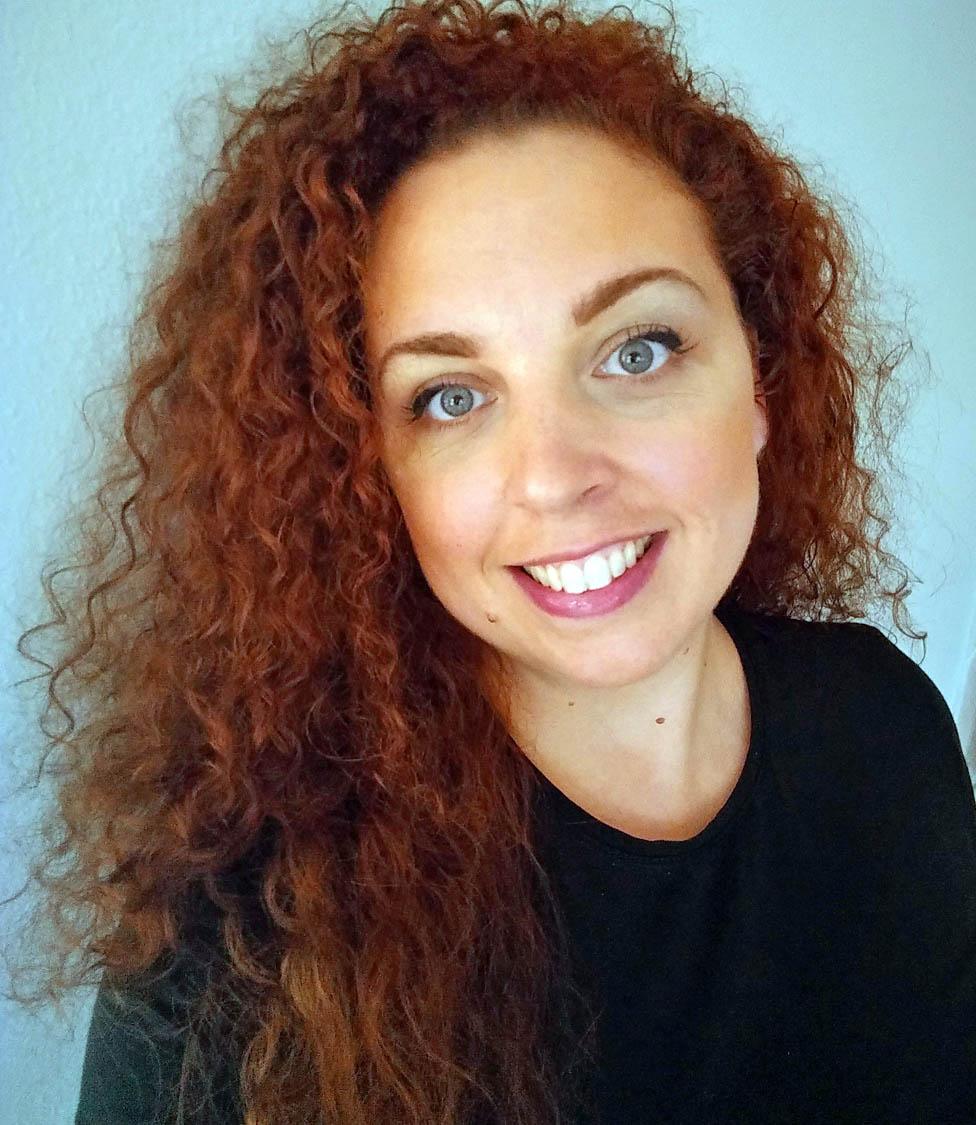
Romy works as a costume designer
Life went on for McCloskey. She met and married her husband Jim and had two sons, Henry and Linus. The family moved to Texas where she worked as a costume designer and embroiderer. She did what she could to encourage wildlife in their small back yard.
Then last summer she came across some caterpillars that, she recognised, would turn into Monarch butterflies. Remembering her mother's words, McCloskey was determined to help them.
"It felt like kismet," she says.
"I wound up not having enough food for them, so I went to the local nursery and bought more - and of course more plants attracted more butterflies and it just kind of snowballed from there."
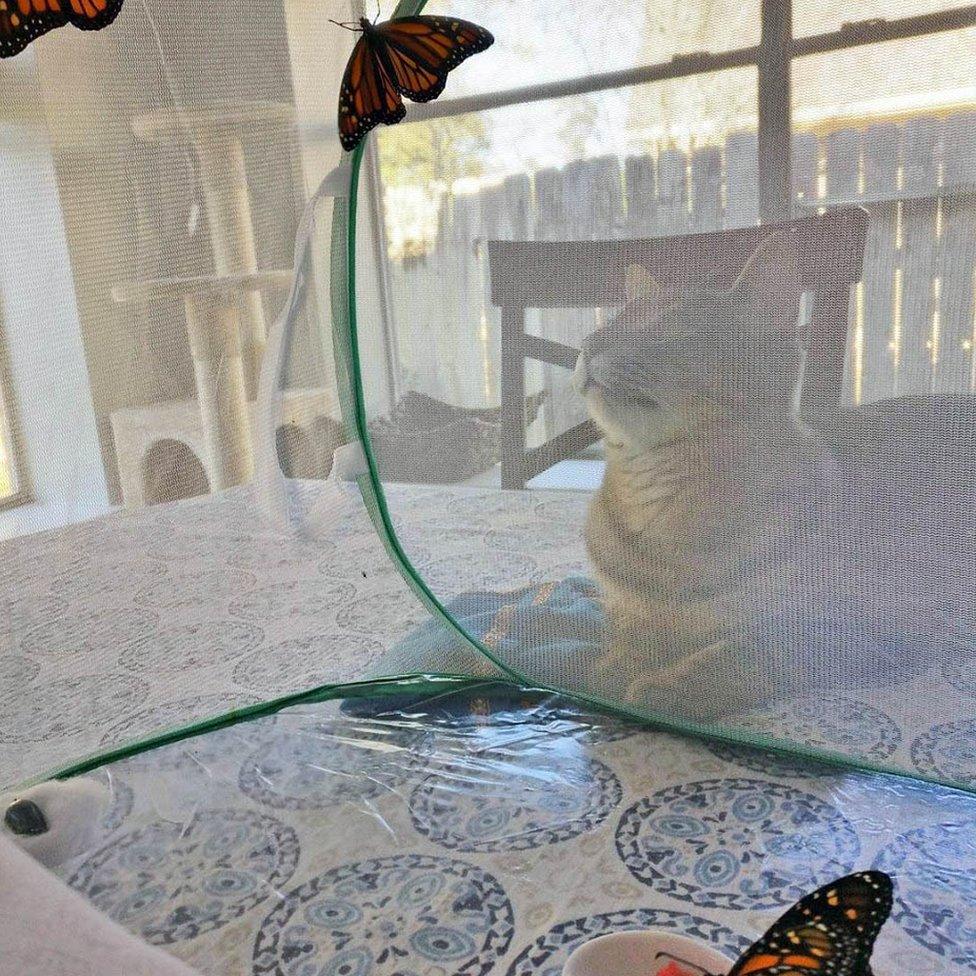
Floki the cat eyes up the butterfly enclosure
McCloskey retrieved eight eggs just before the first frost and incubated them. She watched as each caterpillar formed a soft jade green chrysalis for their final stage of transformation. However, also watching was McCloskey's housecat, Floki.
"My enclosures are covered with two types of mesh. One day I was changing out the food and left the mesh off, when Floki decided to give one of the chrysalises a little swat."

The butterfly's damaged wing
The encounter left a crack in the now-hardened chrysalis and McCloskey waited anxiously to see what would happen.
"When the butterfly came out, the top and bottom wing on the right-hand side stayed attached to the chrysalis and tore a good portion away.
"It left a big hole, almost like someone took a rock and threw it through a kite."
Butterflies need balanced wings to fly and McCloskey was heartbroken to think she might have to euthanise him. However, a friend sent a video link that showed how Monarch wings could be repaired. McCloskey watched the delicate procedure multiple times before deciding to take the plunge.
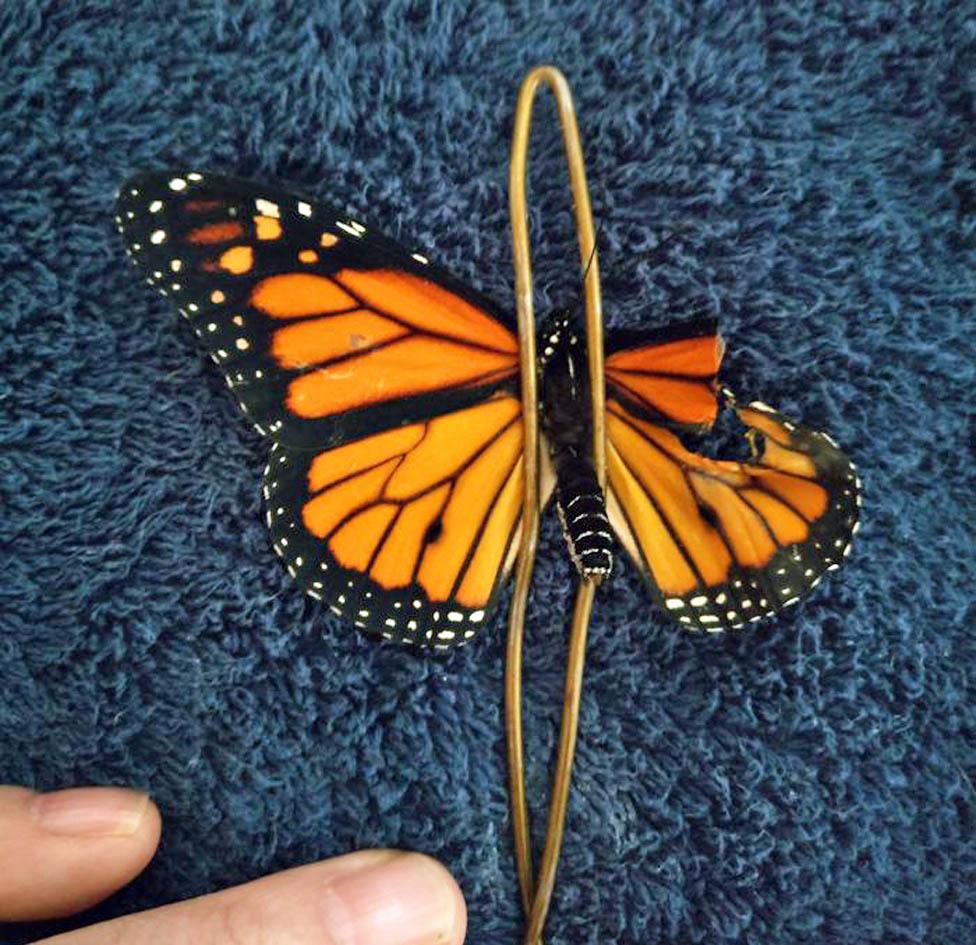
The butterfly is kept still ahead of the operation
She pinned the butterfly to a towel by shaping the wire hanger in a loop and carefully trimmed away the damaged area with scissors, which she says is like trimming hair and causes no pain.
"I had a female butterfly that had sadly passed away so I used her as a wing donor. I matched the top and bottom right wings up to within a millimetre. Luckily, my profession requires small, intricate work."
McCloskey attached the donor wings using a tiny amount of contact cement on a toothpick. She lastly dusted the wing with talcum powder to stop any accidental sticking.
"I put him in his cage to let him rest and gave him nectar I made out of raw honey, water, and a bit of sports drink."
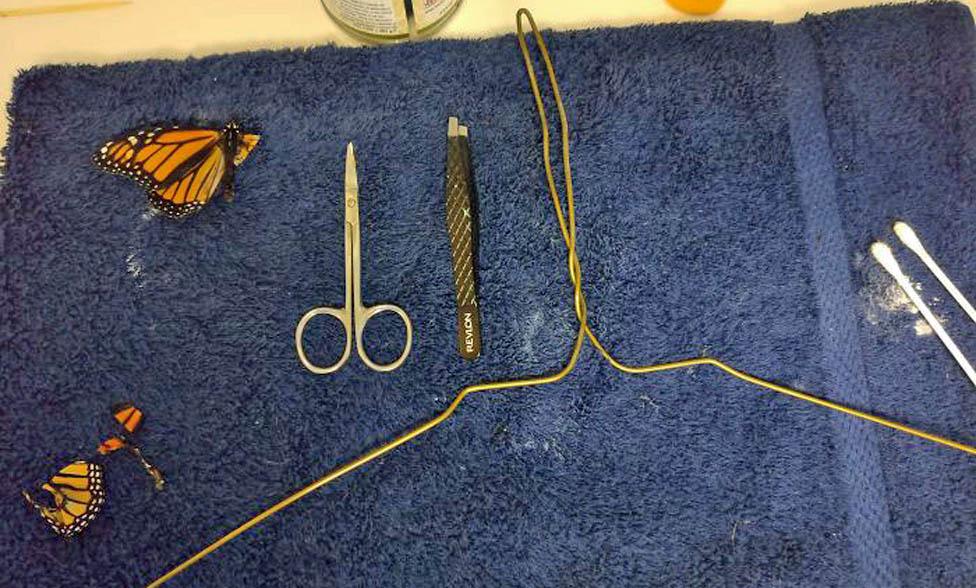
The butterfly, top left, after the damage is cut away
The next day she took her convalescent outside to see if he would fly.
"It was perfect weather, a slight breeze, not a cloud in the sky - a really nice Texas day.
"I had him on my hand and I said, 'All right buddy, do you want to give it a go?' and he kind of took to the air a little bit around my garden and landed on a bush."
McCloskey was used to butterflies flying straight out of her garden and thought this was a sign her butterfly wasn't ready.
"But when I reached for him, he took off and flew high towards the Sun. It was an incredible experience."
McCloskey thinks it's unlikely she'll need to repair another butterfly wing.
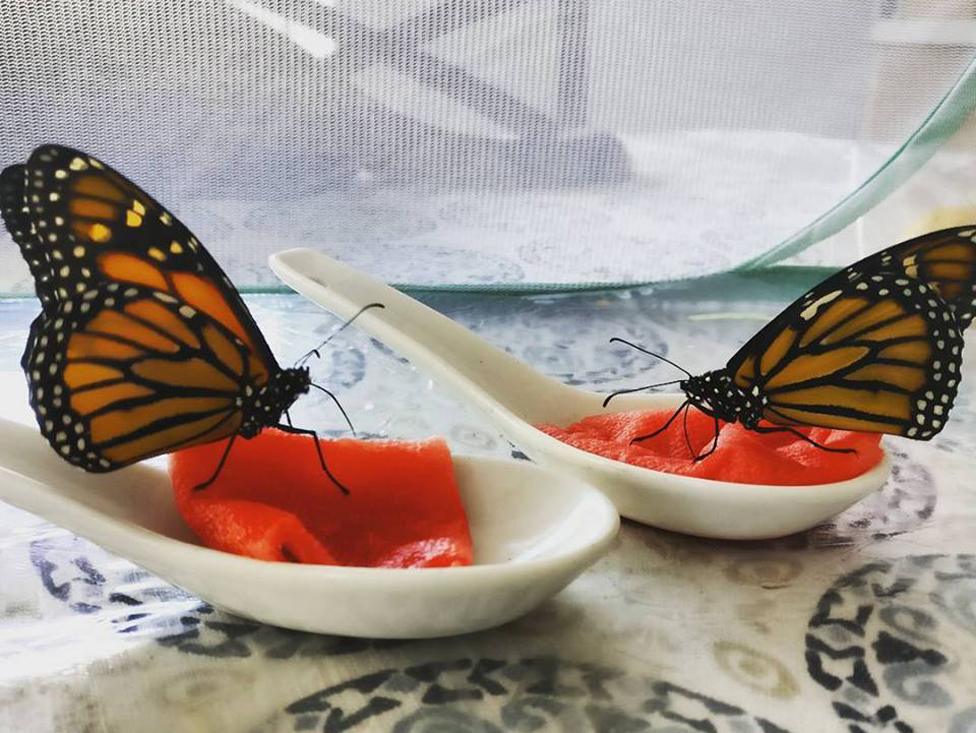
Butterflies eating fruit
"It was a once-in-a-lifetime thing. Some butterflies have deformed wings due to a parasite, but you would never send them into the wild as you need to stop the contamination from spreading.
However, McCloskey is dedicated to continue raising Monarch butterflies in memory of her mother. She has passed her interest on to her sons who rush home from school to see their latest stage of metamorphosis.
"I've released about three dozen since I started and I've already got seeds in to grow my new milkweed. I've got five varieties this year," she says.
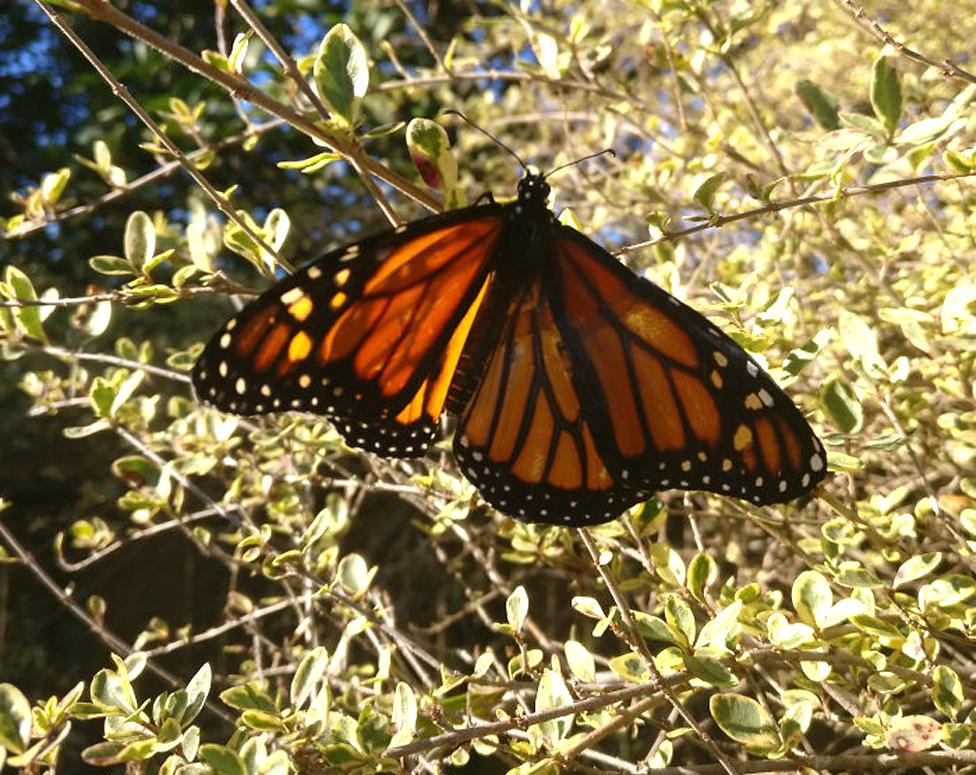
The butterfly with its fixed wing on a bush
She hopes to begin tagging them with a little sticker to collect data that will help to preserve the species.
"I wish I'd had a tag when I released the butterfly I fixed. I often wonder what someone will think if they find him!"
All photos copyright Romy McCloskey. To find out more about her mission to save the Monarch butterfly visit her on Facebook, external and Instagram, external
Claire Bates is on Twitter @batesybates, external
Join the conversation - find us on Facebook, external, Instagram, external, YouTube, external and Twitter, external.
